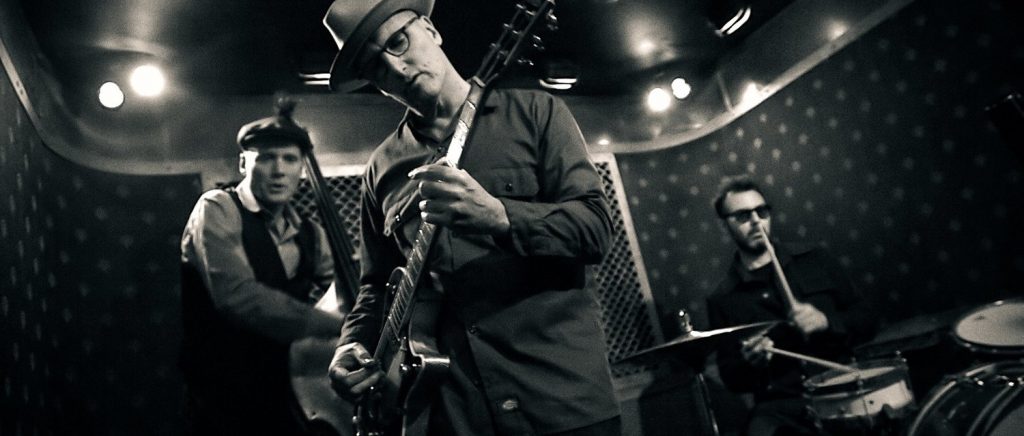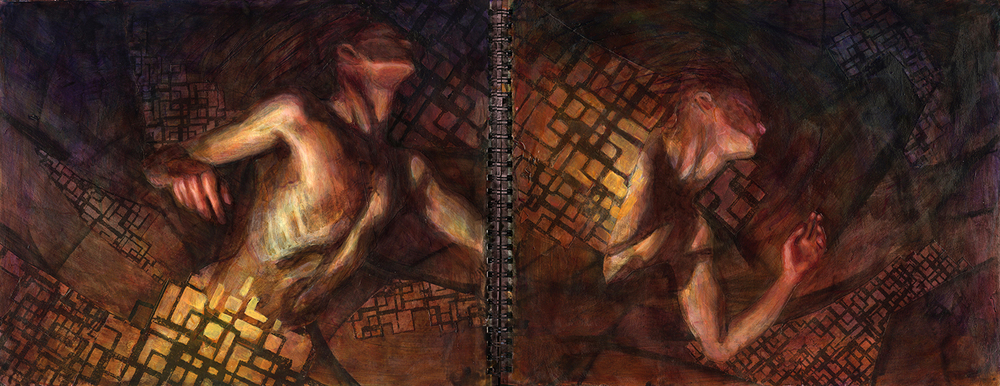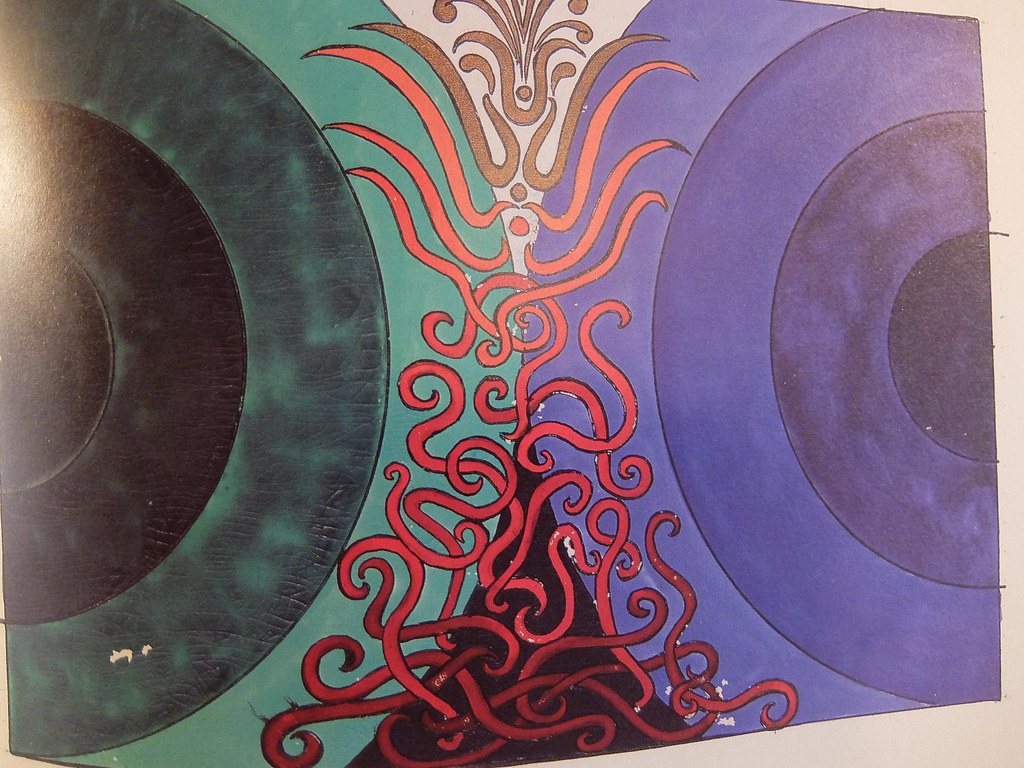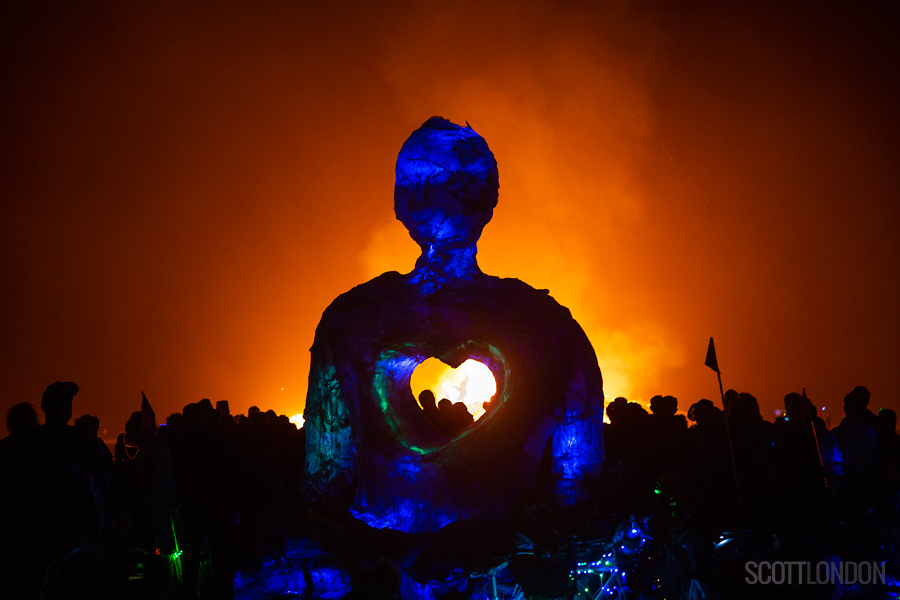Memes, Mantras, and Modern Illusions of the Eternal
You must be shapeless, formless, like water. When you pour water in a cup, it becomes the cup. When you pour water in a bottle, it becomes the bottle. When you pour water in a teapot, it becomes the teapot. Water can drip and it can crash. Become like water my friend.
-Bruce Lee: A Warrior’s Journey
During my years of teaching mindfulness meditation across a wide variety of settings, I found that the classes I led in the county jail resonated deepest with me, despite their numerous challenges. Due to the nature of the facility a student might be awaiting trial, serving a short sentence, or slated to begin a lengthier term in state prison. Attendance was therefore unpredictable. Sometimes a class would have a dozen students who I would guide through walking and sitting meditation in the chapel. Other times it might consist of a one-on-one lesson with a single prisoner, often turning into a personal discussion bordering on talk therapy. Some groups were stone-faced and serious, others talkative and jocular. The tenor of the room would be further influenced by whatever had happened at the facility that day. Violent incidents had often darkened the class’s mood before I walked through the door. In light of the variables which made planning classes difficult, I tended to approach each session with a flexible lesson structure, an open mind, and a single quote.
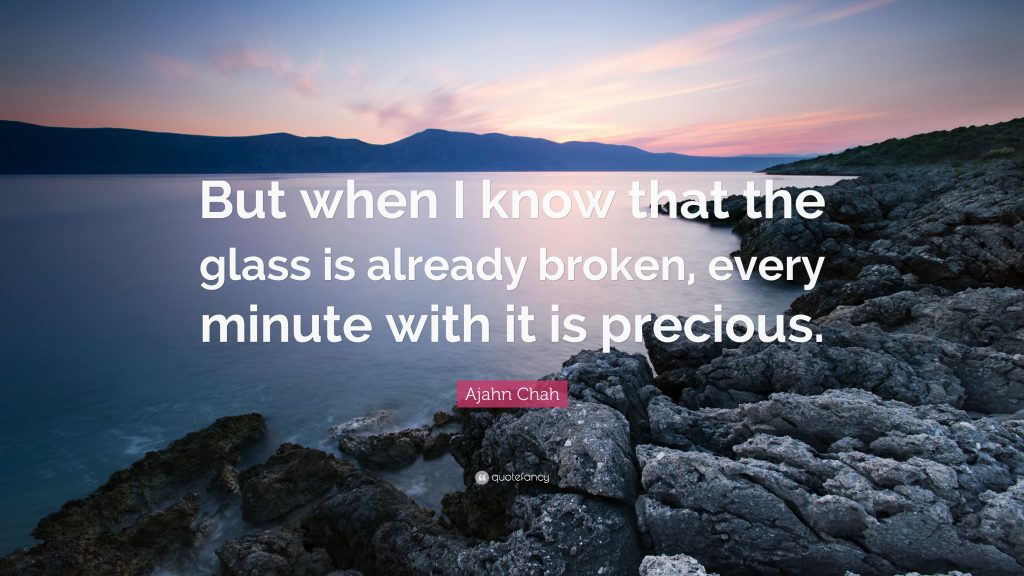 These quotes, culled from a variety of sources, often provided a framework around which class could be shaped as circumstances dictated. One afternoon found me wavering between several of the quotes in my stockpile in anticipation of that evening’s class. The previous week had seen some success with Ajahn Chah’s story of how he treasured his favorite glass as though it had already shattered. My students connected with the parable, and it had engendered a fruitful conversation about impermanence. Instead of delving deeper into the conspicuously Buddhist vein, however, I decided upon Bruce Lee’s stirring illustration of the formidable formlessness of water.
These quotes, culled from a variety of sources, often provided a framework around which class could be shaped as circumstances dictated. One afternoon found me wavering between several of the quotes in my stockpile in anticipation of that evening’s class. The previous week had seen some success with Ajahn Chah’s story of how he treasured his favorite glass as though it had already shattered. My students connected with the parable, and it had engendered a fruitful conversation about impermanence. Instead of delving deeper into the conspicuously Buddhist vein, however, I decided upon Bruce Lee’s stirring illustration of the formidable formlessness of water.
That evening saw a healthy turnout for class featuring several unfamiliar faces. One young man, heavily muscled and tattooed, listened in rapt attention as I spoke of the gift of breath and went through some abdominal exercises designed to facilitate deep breathing. His standing amongst the others was apparent; while the expressionless, unwavering stare I’d cultivated to quell disturbances was slowly thinning a trickle of snickering into silence, he was able to stop it instantly with a single glance. He took every breath in zazen and every step in our walking meditation around the perimeter of the chapel with the solemnity of a judge.
At the end of the night he thanked me profusely, responding to my proffered hand by pulling me into a hug instead. I asked if I would see him at next week’s class, but he responded that he was being sent upstate for a five-year stint the next morning. While I collected my belongings and surrendered my pass at the front desk, he was being marched back to the housing unit for what would likely be the easiest night of his foreseeable future.
During my ride home I reflected about the single hour of meditation I’d been able to offer him, and whether it would be useful during the travails ahead. I thought about the quote I had chosen, and wondered if there hadn’t been something which might have served him better. I found myself scouring my memory for something more profound, some nugget of timeless wisdom which might have somehow sustained him throughout the difficult years to come.
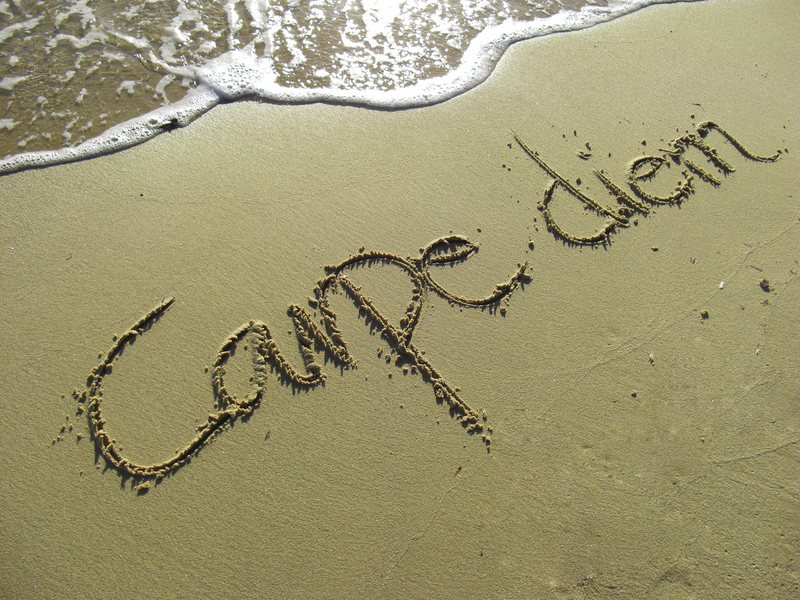 If the affirmations spattered across the internet that frequently pile up in our inboxes worked the way they claim, then one well-chosen aphorism would be all we ever needed to read again. The effects of these modern incantations, however, are as fleeting as their sources are dubious. Motivational cats and faux-Einsteinian quotes clog our timelines and manage to give us a short burst of endorphins before they peter out into renewed (and often deepened) frustration. Most of us do not have the opportunity to live in a perpetual, adrenaline-fueled adventure which would allow us to simply shrug off the latest office downsizing or pediatrician’s bill. Instead, we claim victories on lesser battlefields, and convince ourselves that we are triumphant and happy. “Carpe diem,” we announce to the unraked leaves, and log onto Facebook to extoll our newfound wisdom throughout cyberspace — reminding our friends and family to repost our thoughts in the hopes that repetition will bring validation.
If the affirmations spattered across the internet that frequently pile up in our inboxes worked the way they claim, then one well-chosen aphorism would be all we ever needed to read again. The effects of these modern incantations, however, are as fleeting as their sources are dubious. Motivational cats and faux-Einsteinian quotes clog our timelines and manage to give us a short burst of endorphins before they peter out into renewed (and often deepened) frustration. Most of us do not have the opportunity to live in a perpetual, adrenaline-fueled adventure which would allow us to simply shrug off the latest office downsizing or pediatrician’s bill. Instead, we claim victories on lesser battlefields, and convince ourselves that we are triumphant and happy. “Carpe diem,” we announce to the unraked leaves, and log onto Facebook to extoll our newfound wisdom throughout cyberspace — reminding our friends and family to repost our thoughts in the hopes that repetition will bring validation.
There is, of course, nothing inherently modern in these continually echoed invocations, only their digital avenues. One of the more intriguing and ancient manifestations of the repeated phrase or sound is mantra, the term being a Sanskrit word meaning “tool of thought.” Scholars, teachers, and meditators alike explore (and disagree upon) the purpose and evolution of the practice, yet few doubt its effectiveness. Neuro-hemodynamic studies have shown that chanting the syllable OM — even within those unfamiliar with the practice of meditation — prompts a deactivation of the limbic system, the place in the brain where emotion, stimulation, and memory are managed. Arresting our habitual reactivity is facilitated by this sound, even if we don’t have that intention when we chant it. I briefly wondered if it might have been better to spend the entire class that evening leading my students in an hour-long OM.
Mantra, of course, need not take the shape of OM, but can be forged into a myriad of chants or devotional recitations. A recent discussion amongst our local sangha speculated that absolutely anything could be used as mantra, including lines of Blake’s poetry or a phrase as nonsensical as “Hell in a hand-basket.” When repeated ad nauseam, all of the customary meanings of the word or phrase would dissolve — along with our attachment to their significance. But even as a way to allow us some objective distance from the torrent of thought, its effectiveness would eventually be co-opted by the very ego-driven forces which it initially managed to disrupt. I would inevitably grow disillusioned someday when “Tyger tyger, burning bright” or “Hell in a hand-basket” — finally repeated as a rote, vestigial prayer rather than a sincere invitation to presence — failed to dissipate my frustration while stuck in traffic.
After one of my first meditation retreats, I was convinced that I’d found a strange manner of “short-cut” to mindfulness by repeating the phrase “I am going to die tonight.” Much of my life had been lived in preparation for the future. There was — as inculcated by parents and teachers, who justifiably need to train children to delay gratification — a complete self located somewhere in the future which would reap the benefits of all of my efforts. These childhood lessons were reinforced in adulthood through promised but continually delayed harvests of that projected self. As I opened up to the concept of impermanence, however, I was faced with a terrible revelation: the teleological “me” I’d hoped to cultivate was a myth, largely unconnected to the various past selves who had all lived and died for his sake.
While immersed in meditation, I was virtually traumatized by the realization that I’d spent a lifetime in the throes of self-delusion. I found myself emotionally reduced to the status of a blubbering toddler in a strange and frightening world. When the phrase “I am going to die tonight” dropped into my mind as I sat on the cushion, I adopted it as a slogan for the remainder of the retreat. Acknowledging that the “me” who awakens tomorrow morning will be different from the “me” who falls asleep tonight brought the present moment into a new light. I reminded myself that this would essentially be the last meal I ate, the last walk I took, or the last time I showered. My only options were to fully engage and enjoy the experience, or to waste it.
Obviously this approach had limited potential. Within a couple of months after returning home, its effectiveness slowly waned before dissolving into an impotent frustration. An untamed ego eventually toxifies every antidote, mantra, and affirmation, incorporating them into new elements of an identity we now fear to lose. Despite its neurological effects, even OM — if treated as a universal talisman to stave off anger, confusion, and negativity — will wear out its usefulness and shrink into hollow recitation. Every aphorism is eventually absorbed and assimilated by ego. Our choice lies in whether we heed the lessons of its pyrrhic demise or stand at its graveside and demand that it rejoin us in a familiar refrain.

“Those who mind, don’t matter, and those who matter don’t mind,” – letters formed around the scattered fluff of a dead dandelion set aloft by the exhalation of a carefree, hippyish woman on my computer screen. I convince myself that I am instantly liberated from the tyranny of others’ expectations — while conveniently ignoring the quote’s context wherein Bernard Baruch was shrugging off the importance of seating arrangements at a dinner party. The words have been splashed across enough inspirational scenes and portraits of a resolute Abraham Lincoln or self-assured Marilyn Monroe as to be effectively emancipated from such pedestrian origins.
Most of the quotes we treasure imply a deep, innate wisdom stemming from the unspoken assumption “I am right.” We are exhorted to throw caution to the wind and pursue our dreams, often envisioned as a forest path into the sunset with Winston Churchill’s words inscribed over the leaves. This is a tantalizing prospect. If we are the only obstacle in our own way, then we can taste success merely by choosing to do so. “A goal is a dream with a deadline” announces the silhouette of a runner in the dawn, relocating the more strenuous aspects of our ambition offstage — often convincing us that we’ve already done a great deal of the legwork without even knowing it.
Perhaps it is no coincidence that these glib and unsatisfactory answers have proliferated at a time when we are largely unmoored from collective mythology. In her book, The Battle For God, Karen Armstrong connects the rise of religious fundamentalism to the misguided conflation of the spiritual and cultural mythos with the empirical logos. The resultant radicalism — which frequently ventures into the violent — has actually failed to deliver the promise of the unchanging, instead molding itself into the rigid confines of cultural and political circumstances with a profound void at its core.
For those of us who attempt a more secular approach, the proliferation of profundity in popular culture has given rise to countless niches into which we happily spread ourselves in search of these same eternal verities. Disconnection from some hypothetical divine source does not diminish the instinctual quest for unity. We might congratulate ourselves on having progressed beyond the authoritative solo of tradition into a polyphonic, infinite choir of possibilities — yet we still seek the definitive and changeless. We collect quotes and images as though they are relics of a now-lost world before various facets of life were sundered from one another. Grasping for the practical and immediate within the sphere of the archetypical has left us ransacking the world for sages and their timeless wisdom in a new breed of secular or philosophical fundamentalism.
Armstrong’s work aptly illustrates the revolt against seismic societal changes and foreign dominion (or the illusion of these encroachments) and how it renders entire populations subject to a literal misreading of mythopoeia. But those of us who consider ourselves unshackled from those traditions are no less susceptible to the promise of unchanging wisdom and the glorification of a legendary past. Regardless of what path we adhere to, the dead, enlightened age we imagine is furiously sought in the bylaws of ancient kingdoms, the demi-deities of our nation’s founding, or a flood of pop culture. While seeking a vessel to give us shape, we are left rummaging through Leviticus in the hopes that Bronze-Age Israelites can somehow shed light on the current real estate market, or pining for the “simpler” days of the 1950s as depicted on television, or smugly posting the first step of our projected thousand-mile journey flanked by the pixelated guides of Gandhi and Good Guy Greg.
It took quite some time and sitting for me to recognize the inherent irony of my questioning the suitability of the Bruce Lee quote, just as it had for me to recognize the desperate grasping in my “I am going to die tonight” refrain. My craving for a permanent container had blinded me to the wisdom within the words — and reduced my one-time student to a symbolic emanation of my own ego.
I’ve taught many students (possibly hundreds) over the last few years, but I have not been able to keep in contact with more than a handful of them. There is no way for me to know if a meditation practice was able to find a place in that young man’s life. I’d known groups of my students to practice walking meditation around the perimeter of the housing units or the exercise yard, but the harsher, stricter confines of state prison were unlikely to allow him a similar option. So I frequently invite him into the mental space of my meditations, accepting his teaching and remembering that the unfolding of the eternal present is the only truly livable experience. I too need to learn to become like water — but, like many of us, I occasionally need my accustomed vessels to be shattered.
____________________________________________________________
Referenced in this work:
Food For The Heart: The Collected Teachings of Ajahn Chah; Wisdom Publication; Boston; 2002
“Neurohemodynamic correlates of ‘OM’ chanting: A pilot functional magnetic resonance imaging study” https://www.ncbi.nlm.nih.gov/pubmed/21654968
Karen Armstrong; The Battle for God; Alfred A Knopf; New York; 2000



